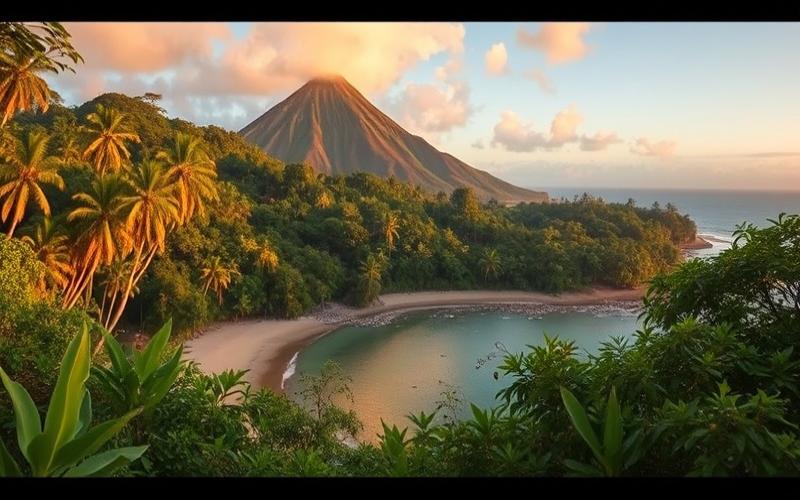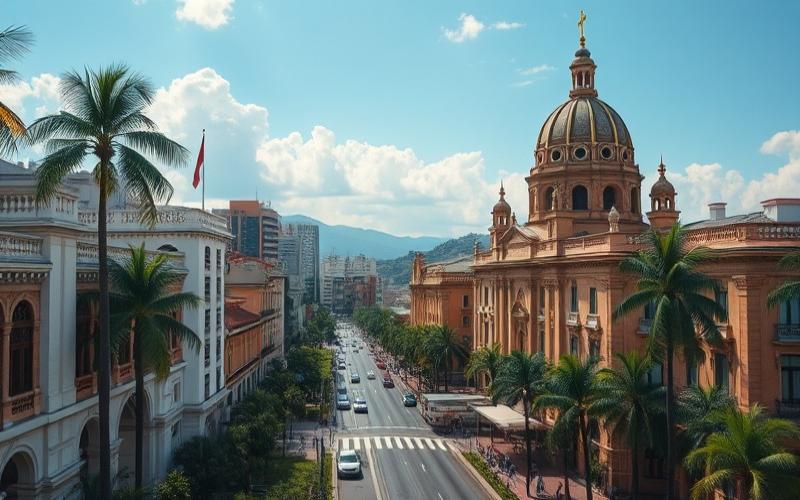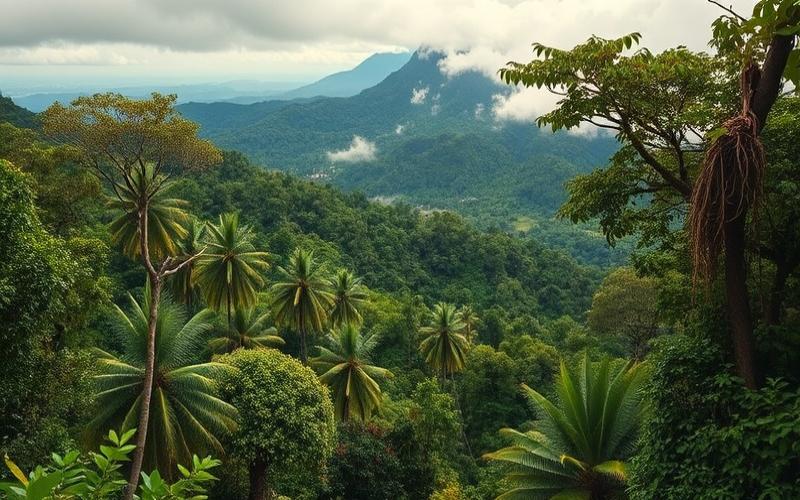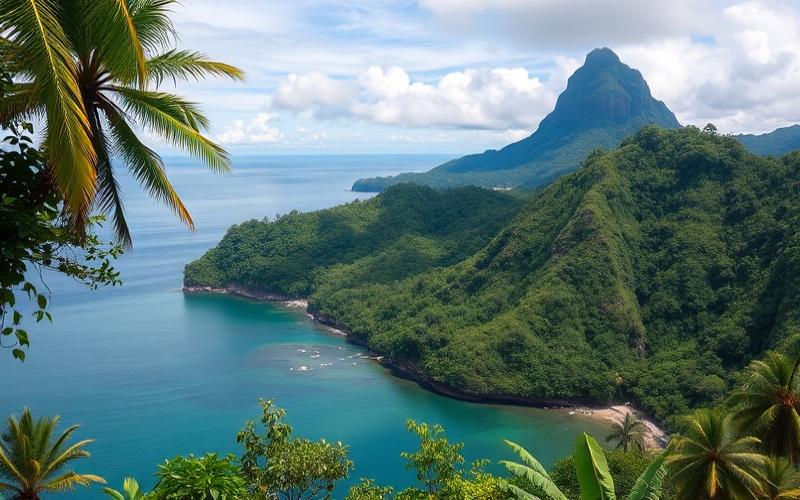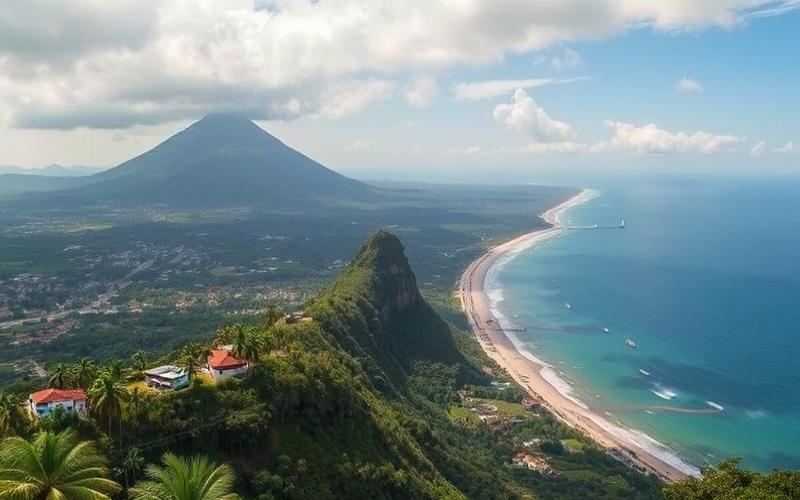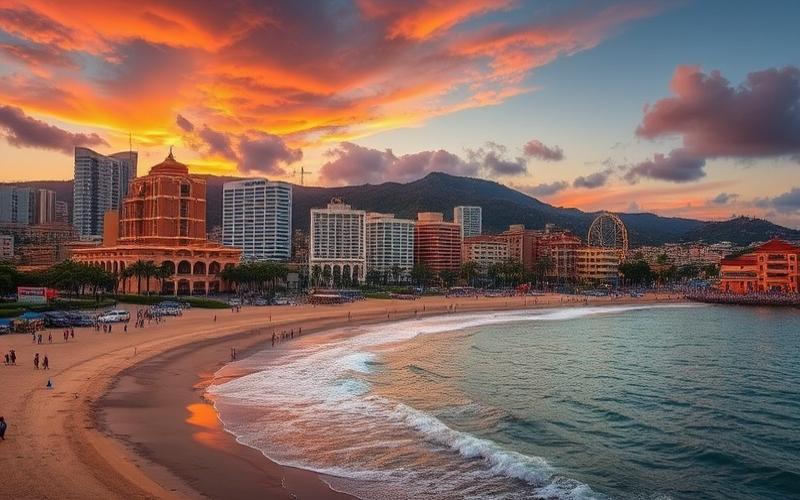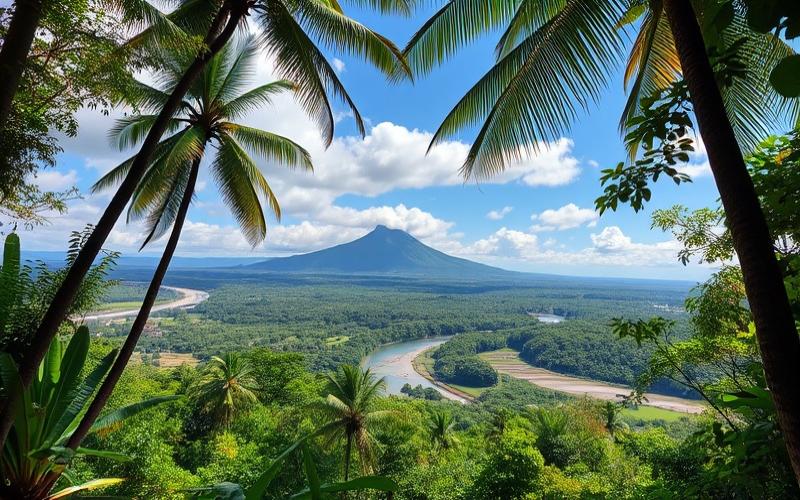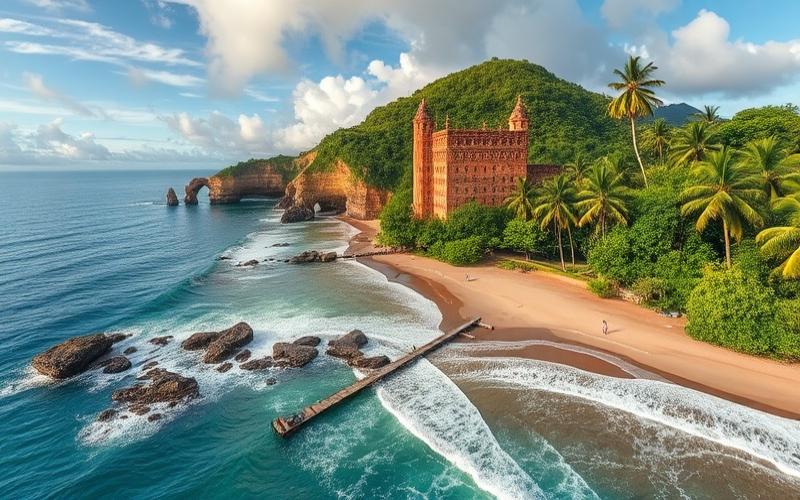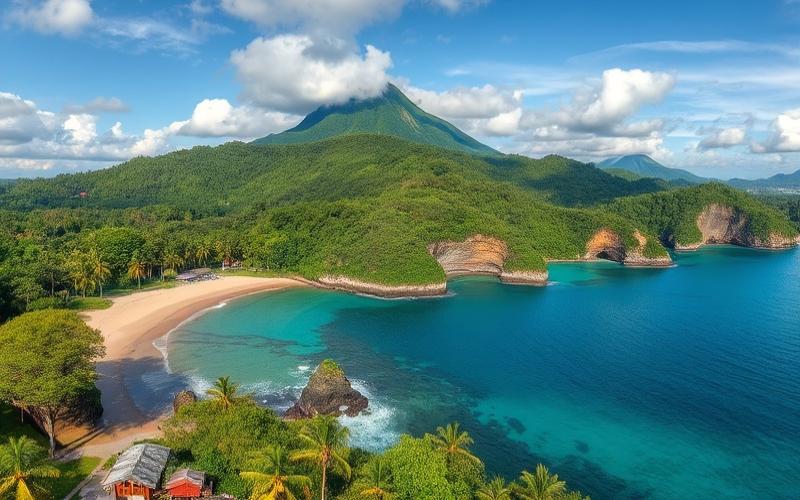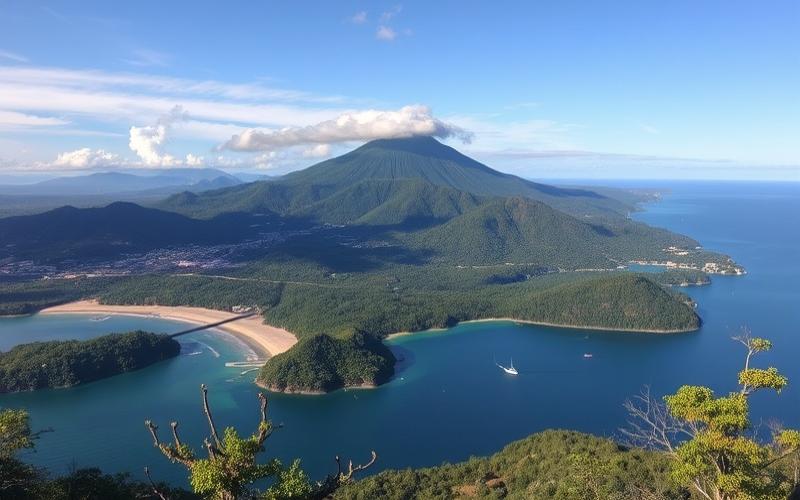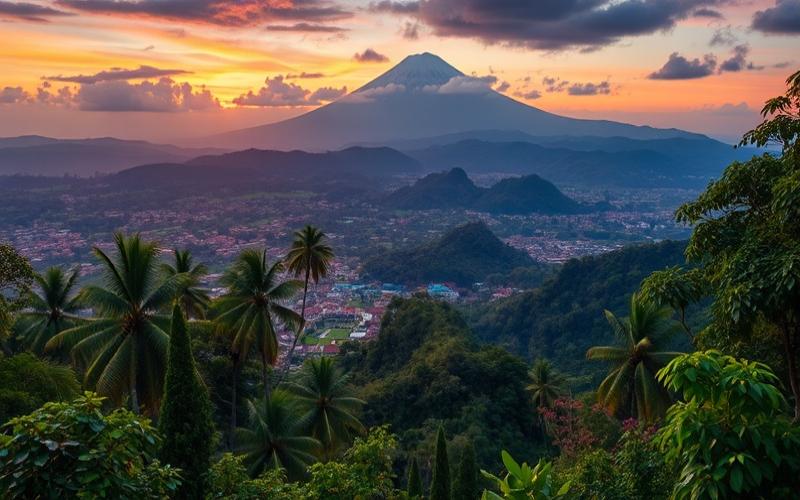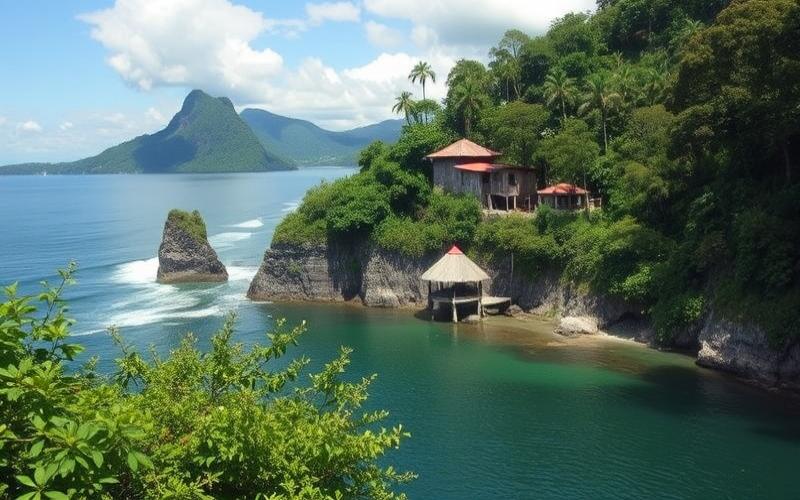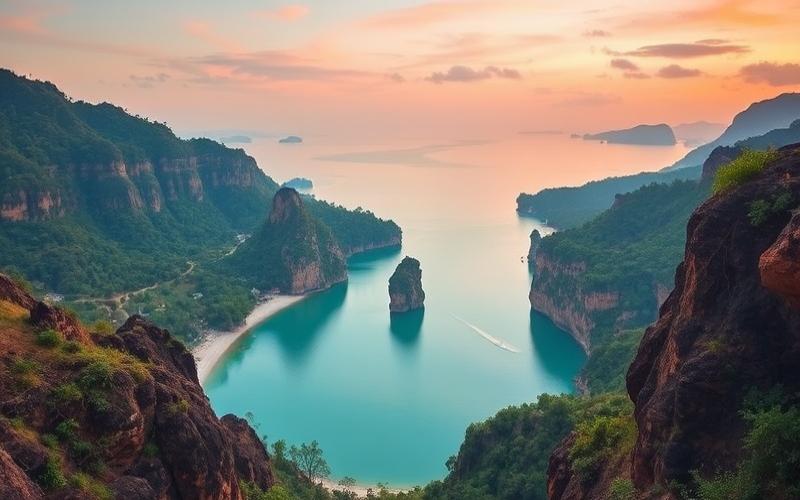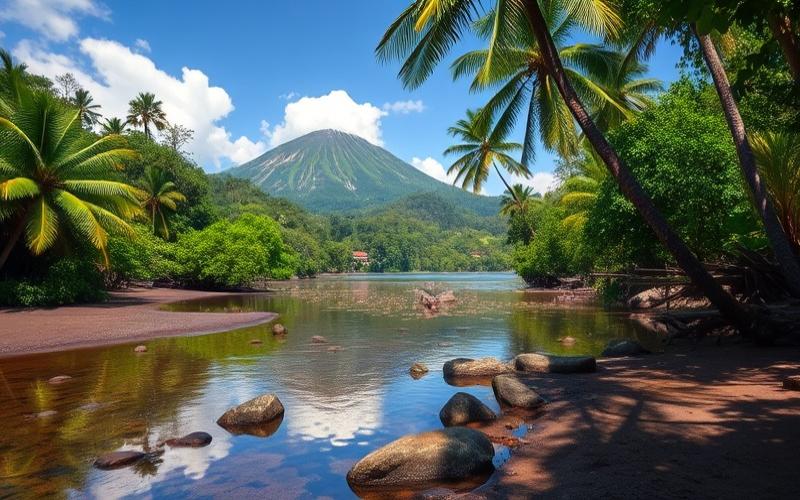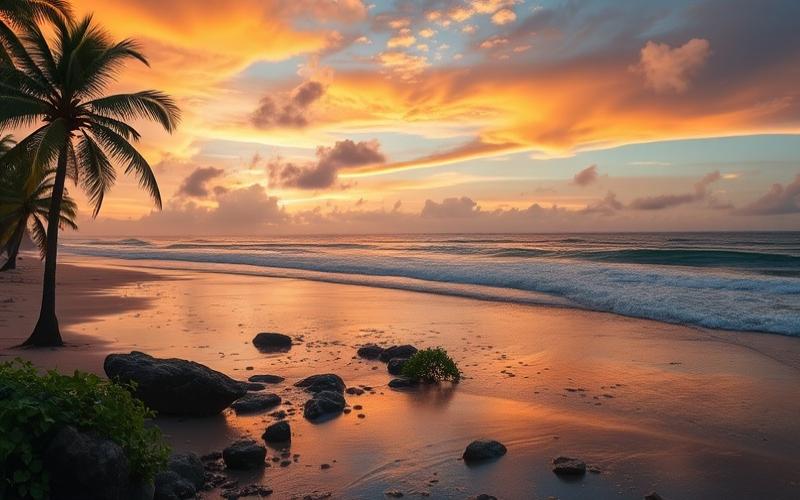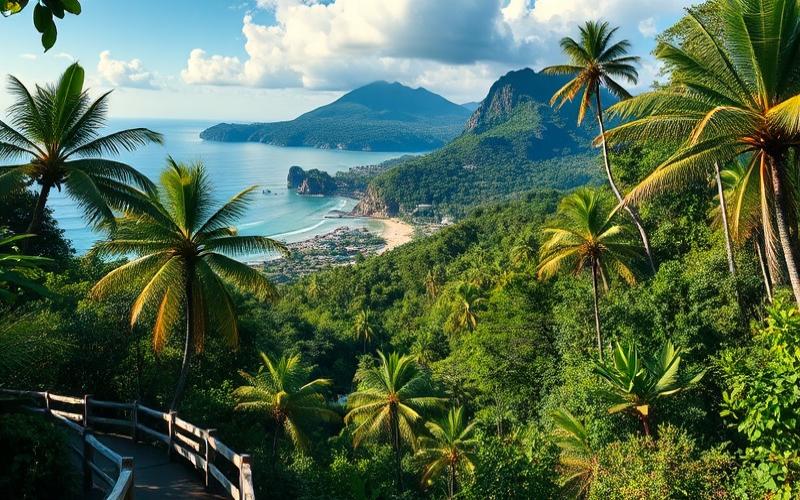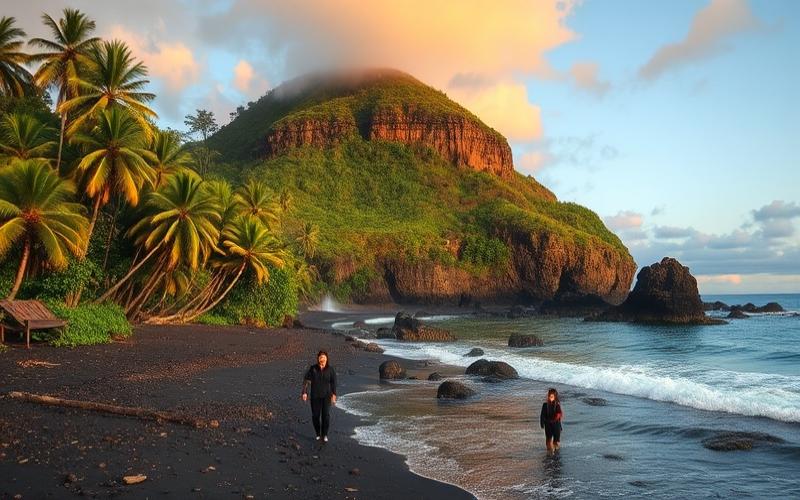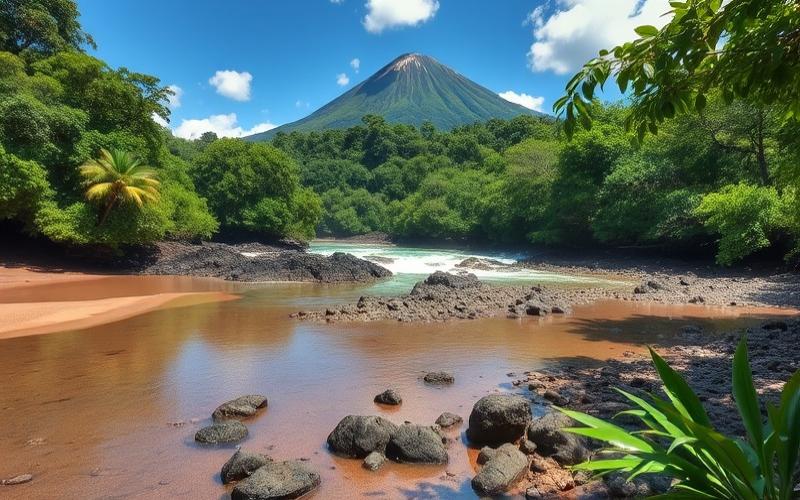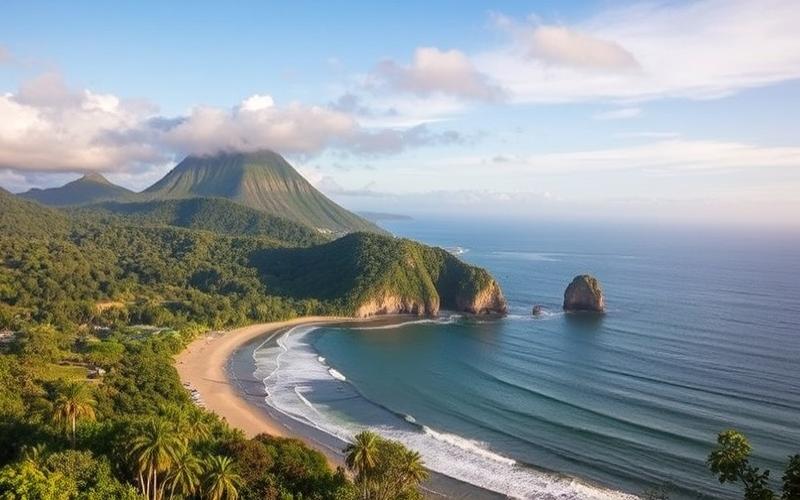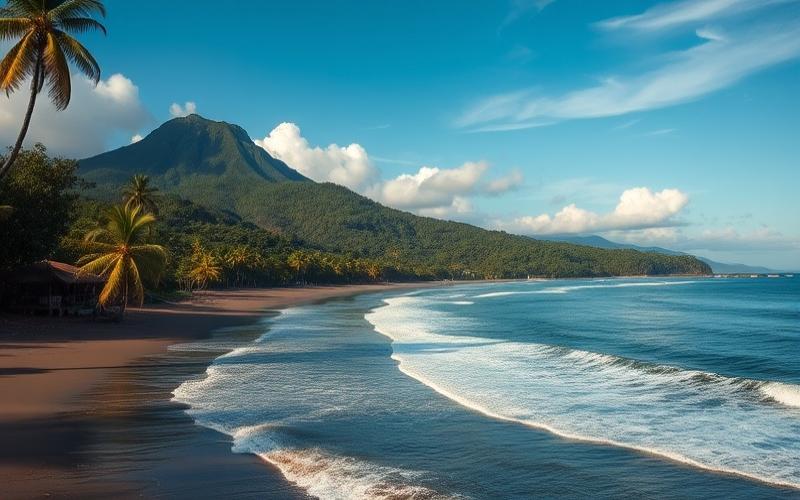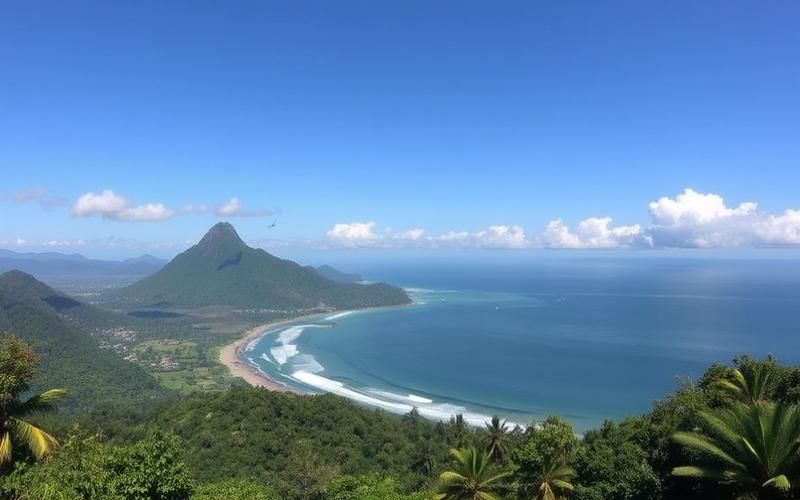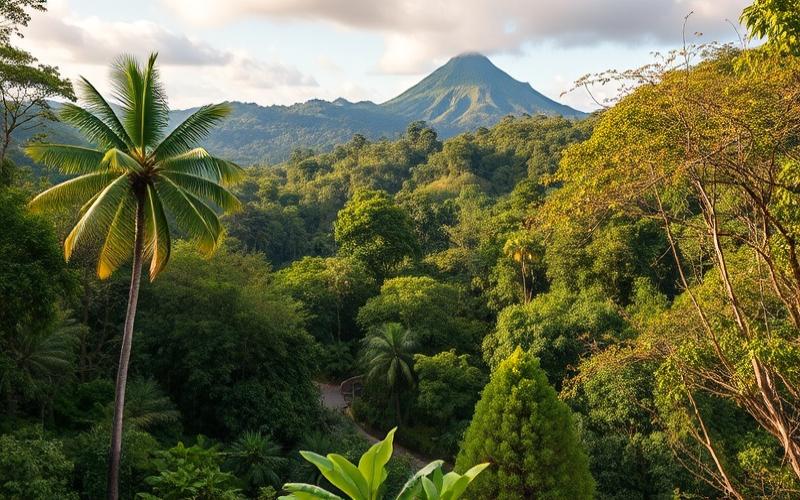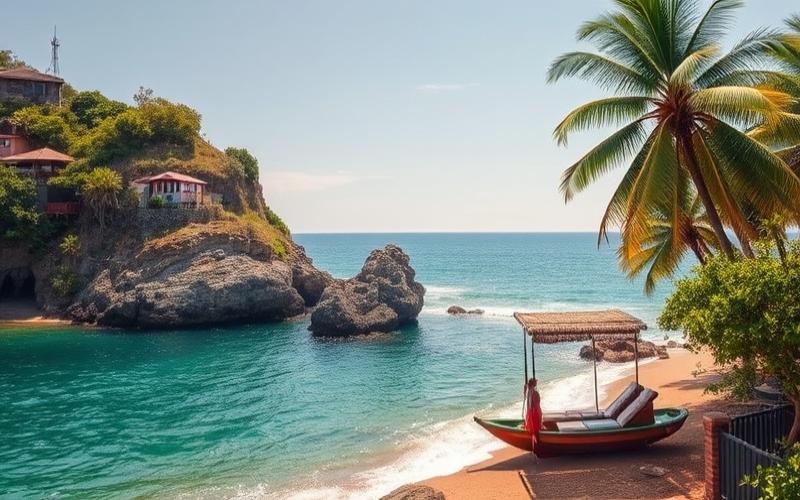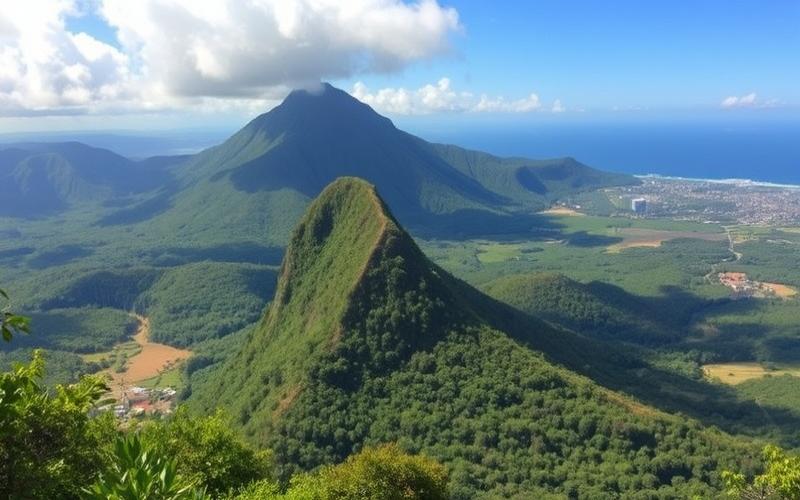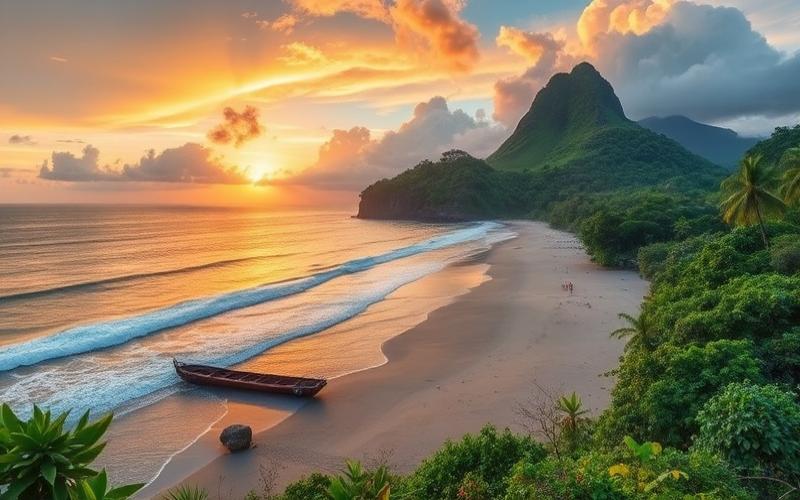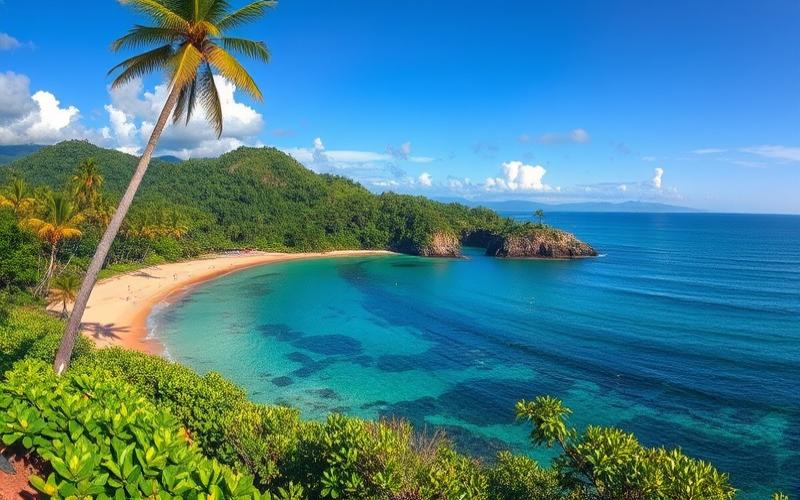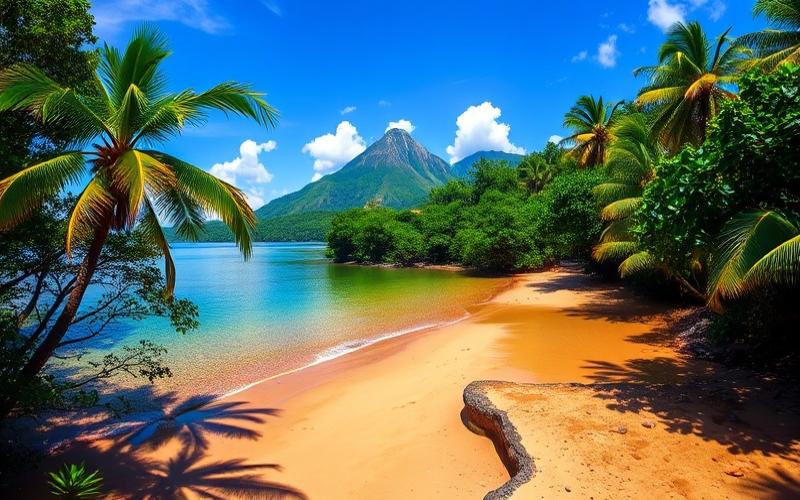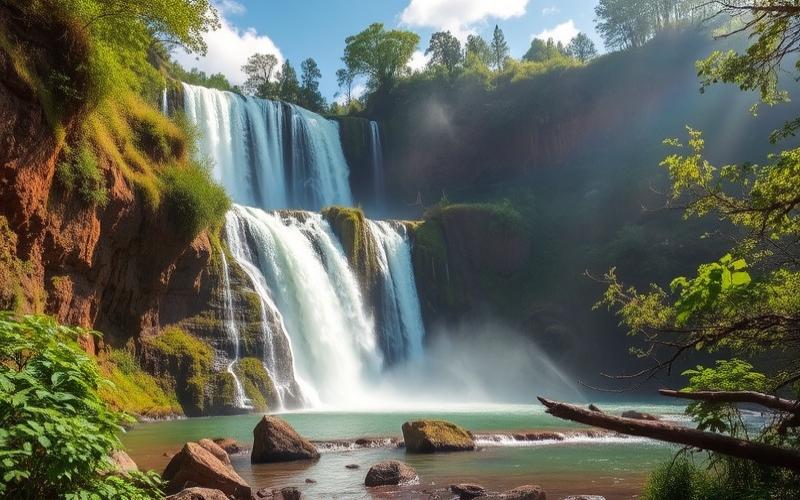
 Published on and written by Cyril Jarnias
Published on and written by Cyril Jarnias
Costa Rica Real Estate: Capturing the Magic of Properties
Costa Rica real estate offers a multitude of wonders, from paradise beaches to breathtaking mountain landscapes. But how do you capture all the magic of these properties to attract potential buyers?
The Secrets of Great Real Estate Photography in Costa Rica
In this article, discover the secrets of great real estate photography in Costa Rica, where natural tropical light and vibrant colors play a crucial role.
Good to Know:
Tropical light is particularly intense between 9am and 11am, making it the ideal time to photograph your properties.
Essential Techniques to Enhance Your Shots
Whether you’re a real estate agent looking to improve your listings or a homeowner wanting to showcase your house, we’ll reveal the essential techniques to enhance your shots and thus maximize your impact in this visually rich and competitive environment.
The Benefits of a Real Estate Photographer in Costa Rica
Specific Local Skills of Real Estate Photographers in Costa Rica:
- Mastery of the best times of day to utilize natural tropical light, often early morning or late afternoon, when the light is soft and enhances both interior and exterior spaces.
- Expertise in showcasing tropical properties through understanding local materials (exotic woods, green roofs) and using shooting angles that highlight natural ventilation, ceiling heights, and integration with the environment.
- Knowledge of local real estate market trends enabling targeting of distinctive characteristics sought by international buyers or renters (infinity pools, panoramic terraces, lush tropical gardens).
Presentation of Lush Outdoor Environments:
- Use of photographic composition to frame views of jungle, mountains, or ocean, and harmoniously integrate the surrounding nature into each image.
- Employment of wide-angle lenses to open perspectives on outdoor spaces, making properties appear more spacious and attractive.
- Utilization of aerial drone photography to highlight property location and landscape integration, particularly effective for villas and luxury residences.
Examples of Sales and Rental Improvements:
| Before Professional Photography | After Professional Photography |
| Dark photos, cramped spaces | Optimized natural light, open and welcoming spaces |
| Undervalued exteriors | Lush gardens and panoramic views integrated into images |
| Unclear unique features | Architectural details and tropical elements highlighted |
- Agencies using professional real estate photographers see an increase in viewing numbers and a reduction in sales or rental time.
- Properties with carefully curated visual presentation stand out significantly on online portals and social media, capturing potential buyers’ attention more quickly.
Positive Impact on Real Estate Marketing in a Competitive Market:
- Local photographers, through their knowledge of climate, seasons, and architectural specifics, create visuals that enhance listing attractiveness in a highly competitive market.
- A high-quality visual presentation boosts agency branding and lends credibility to the offering for demanding international clients.
- Marketing campaigns incorporating professional images achieve better conversion rates and superior return on investment.
A visual strategy adapted to Costa Rica’s unique environment, orchestrated by expert photographers, constitutes a decisive lever to accelerate commercialization and optimize property valuation in the region.
Good to Know:
Hiring a real estate photographer in Costa Rica brings several notable benefits through their specific skills. These professionals know the best times of day to capture natural light, essential for highlighting unique features of tropical properties. Their expertise enhances both interiors and lush exteriors through careful photographic composition. For example, a house with a tropical garden can see its perceived value significantly increase when presented with high-quality photos that spark interest and desire. This know-how improves both sales and rentals by strengthening real estate marketing strategies, crucial in a market as competitive as Costa Rica’s.
Finding the Best Photo Angle to Enhance Your Living Room
Typical living rooms in Costa Rican homes are distinguished by open architecture, use of natural materials, and decoration inspired by both tropical nature and local craftsmanship. Abundant natural light plays a central role in enhancing each space and creating a welcoming atmosphere.
Characteristic Architectural Elements:
- Large picture windows or sliding glass doors to maximize natural light entry.
- Frequent use of wood (teak, cedar) for exposed beams, ceilings, or furniture.
- Raw concrete walls sometimes left exposed or painted in neutral tones, serving as a backdrop for decorative elements.
- Floors with artisanal decorative tiles that recall the diversity of local flora.
Decoration and Interior Layout:
| Element | Function & Impact |
|---|---|
| Natural Light | Highlight openings oriented toward the garden; light curtains allowing filtered light. |
| Furniture | Arranged to encourage conviviality and fluid circulation; low furniture allowing views to extend outdoors. |
| Local Artwork | Paintings representing Costa Rican fauna/flora; indigenous sculptures placed as focal points. |
| Exotic Plants | Large green plants (philodendrons, palms) integrated into the living room create a direct link with the outdoor landscape. |
Practical Tips for Leveraging Natural Light:
- Prefer matte finishes on walls to avoid strong reflections while pleasantly diffusing brightness.
- Position sofas and armchairs near openings without obstructing visual passage to the outdoors.
- Use mirrors strategically placed facing natural light sources to amplify their effect.
Key Ideas to Strengthen Harmony & Visual Appeal:
- Mix natural textures (linen, organic cotton) on cushions/curtains with subdued colors inspired by the tropical landscape.
- Install a few artisanal centerpieces (handwoven rugs, local ceramic vases).
Recommended Photographic Techniques:
- Choose a wide angle from an entrance or corner to show depth and connection between interior/exterior.
- Tip: Positioning with your back to a main light source helps avoid strong backlighting while evenly illuminating the living room.
- Prefer horizontal framing that encompasses windows opening onto garden/tropical landscape.
- Advice: Intentionally including some outdoor elements in the frame reinforces this “indoor-outdoor” impression characteristic of Costa Rican style.
- Manually adjust white balance according to time/day: prefer warm tones morning/evening; neutral/matte tones during strong sunlight at noon.
- Slightly decrease exposure during bright peaks to avoid “burning” on light surfaces of furniture/walls.
A living room orchestrated around these principles will naturally highlight volume, visual comfort, and authenticity—major assets appreciated by potential buyers during virtual tours.
Thanks to this carefully staged approach where each element interacts with its immediate natural and cultural environment, you maximize not only aesthetic impact but also emotional impact on your target audience.
Good to Know:
To enhance your living room in a Costa Rican house and capture photos that will appeal to potential buyers, it’s essential to leverage abundant natural light thanks to the tropical climate. Choose a time when the light is soft to avoid harsh shadows, and arrange your furniture to create fluid circulation while highlighting local artwork and exotic plants typical of Costa Rican decor. A shooting angle slightly at eye level or from a low angle can amplify the sense of space, while framing that includes interesting architectural elements, like wooden ceilings or colorful patterns, will add depth to the image. Adjust your camera’s exposure and white balance to maintain a bright and warm ambiance, which will help strengthen the living room’s appeal and positively influence your property’s online perception.
Using Drones for Immersive Virtual Tours
The use of drones in Costa Rica’s real estate sector is evolving rapidly thanks to several major technological advances enabling the creation of immersive and attractive virtual tours.
Drone Technological Advances for Real Estate Imaging:
- High-resolution sensors enabling capture of images and videos in 4K UHD, even 6K for some professional models.
- Gyroscopic stabilizers (gimbals) ensuring optimal smoothness of aerial shots, even in windy conditions.
- Automated flight planning and programmable trajectory features, guaranteeing systematic and reproducible property coverage.
- Real-time transmission (live feed) for direct shot control and dynamic angle adjustment.
- Smart shooting modes (panorama, hyperlapse, automatic tracking) facilitating production of immersive content.
| Technology | Contribution to Real Estate |
|---|---|
| 4K+ Camera | Precise detail of textures, colors and materials |
| 3-Axis Stabilization | Smooth virtual tours |
| Programmed Flight | Comprehensive exploration of extensive land |
| Panorama Mode | Showcasing ocean, jungle views, etc. |
Creation of Immersive Virtual Tours:
- Drones reveal the diversity of Costa Rican landscapes (beaches, tropical forests, mountains, volcanoes) and present property integration into their natural environment.
- Thanks to aerial views, it becomes possible to highlight distinctive architectural elements (green roofs, infinity pools, panoramic terraces) difficult to perceive with standard photography.
- Immersive videos produced by drones offer buyers a realistic tour experience, simulating movement around and within the property.
Concrete Examples of Impact on Buyer Interest:
- A villa complex on the Pacific coast saw its online viewing rate double after releasing drone videos highlighting immediate proximity to the beach and unobstructed ocean views.
- For a property in a mountainous area, aerial capture revealed topography, private trails, and tropical gardens, decisive factors for foreign investors at a distance.
- Properties in urban environments use drones to show accessibility, nearby infrastructure, and adjacent green spaces, which don’t appear on plans or traditional photos.
Local Regulations Governing Real Estate Drone Use in Costa Rica:
- Drones are permitted, but professional use (including real estate) requires an operational certification issued by the General Directorate of Civil Aviation (DGAC) as well as a certificate from the Technical Council of Civil Aviation.
- It is strictly forbidden to fly over sensitive areas (presidential offices, prisons, military bases, active volcanoes, etc.) or gatherings of people.
- Responsible use and respect for no-fly zones are mandatory under penalty of fine.
- Real estate agents must therefore plan their shots in compliance with these rules to maximize visual impact without risking penalties.
Main Obligations for Professionals to Remember:
- Obtain appropriate certification for commercial use.
- Consult no-fly zone maps before each flight.
- Do not fly over people or densely populated public spaces.
- Prefer low-altitude shots to highlight architecture while respecting privacy.
Integrating drones into real estate presentation in Costa Rica enhances landscape and architectural diversity, while requiring rigorous mastery of local regulations to guarantee safety and legality of operations.
Good to Know:
Recent technological advances have enabled drones to capture high-definition images, transforming virtual tours into immersive experiences for Costa Rica’s real estate sector. Thanks to these tools, agents can highlight landscape diversity, from picturesque beaches to colonial architecture, creating presentations that particularly attract potential buyers’ attention. A striking example is properties with special features, like elevated infinity pools or breathtaking jungle views, which are difficult to appreciate through standard photographs. However, it’s essential for real estate agents to comply with local regulations regarding drone use, which stipulate flight altitudes and restricted zones, to maximize visual impact while remaining within legal boundaries.
Optimizing Your Listings with Quality Photos
The appeal of a real estate listing largely depends on the quality of photos presented. In the competitive context of Costa Rica’s real estate market, where luxury property offerings are abundant, professional images are essential to capture potential buyers’ attention and differentiate your property.
Why High-Quality Photos Are Essential:
- They create the first impression and evoke emotion, triggering the desire to discover the property.
- They highlight Costa Rica’s specific assets: panoramic views, abundant natural light, integration with nature, proximity to beaches or national parks.
- They increase click-through rates on listings and the number of viewing requests.
How Good Images Enhance Property Assets and Encourage Visits:
- Showcasing bright and open spaces.
- Highlighting views (ocean, jungle, mountain) typical of Costa Rica.
- Optimal presentation of outdoor amenities (pool, terrace, garden, beach access).
- Conveying a unique living ambiance, aligned with the lifestyle sought by international buyers.
Common Mistakes to Avoid in Real Estate Photography:
- Cluttered or messy rooms.
- Dominant artificial light or poor natural light management.
- Approximate framing (cut-off shots, unflattering angles).
- Blurry, underexposed or overexposed images.
- Neglecting details (reflections, personal objects, presence of people or animals).
Practical Tips to Maximize Visual Impact:
List of Best Practices:
- Prioritize natural light: take photos during daytime, curtains open, avoid backlighting.
- Use multiple viewing angles for each room to reflect actual space.
- Perfect framing: place camera at eye level, use landscape format for main rooms, ensure horizon is straight.
- Declutter and stage spaces to create a welcoming atmosphere.
- Use a tripod to guarantee image stability and sharpness.
Comparison Table: Modern Equipment and Techniques
| Equipment/Technique | Main Advantage | Recommended Use |
|---|---|---|
| Professional camera | High resolution, fine light management | Interior and exterior photos |
| Wide-angle lens | Enhances space, creates sense of volume | Living rooms, bedrooms, terraces |
| Drone | Aerial views, property context | Properties with garden, ocean/mountain views |
| Photo editing software | Color correction, brightness, framing | Post-shoot optimization |
Role of Modern Equipment and Techniques:
- Professional cameras and appropriate lenses faithfully reproduce natural brightness and spatial depth.
- Drones offer unprecedented perspectives, particularly appreciated for properties with views or located in spectacular environments.
- Editing software allows image adjustment without distorting reality, for a polished and attractive result.
Professional-quality photos significantly increase listing visibility, accelerate the sales process, and contribute to property valuation in the eyes of demanding buyers. In Costa Rica’s context, where landscape beauty and integration with nature are major assets, investment in real estate photography is an essential lever to optimize property perception and commercialization.
Good to Know:
In Costa Rica’s competitive real estate market, high-quality photos are crucial for attracting potential buyers’ attention, as they can highlight a property’s assets and encourage viewings. Using natural light is essential to reveal details and create a welcoming ambiance, while judicious choice of angles and framing maximizes visual impact, avoiding narrow perspectives that harm space presentation. Common mistakes to avoid include photos that are too dark, blurry, or cluttered. Leveraging modern technologies, like professional cameras or drones, enables capturing striking images that emphasize local particularities, such as views of lush jungle or ocean. By mastering these techniques, you can significantly improve your property’s perception, thus facilitating the sales process in this saturated market.
Disclaimer: The information provided on this website is for informational purposes only and does not constitute financial, legal, or professional advice. We encourage you to consult qualified experts before making any investment, real estate, or expatriation decisions. Although we strive to maintain up-to-date and accurate information, we do not guarantee the completeness, accuracy, or timeliness of the proposed content. As investment and expatriation involve risks, we disclaim any liability for potential losses or damages arising from the use of this site. Your use of this site confirms your acceptance of these terms and your understanding of the associated risks.


